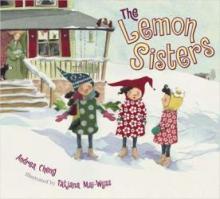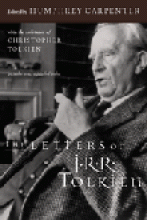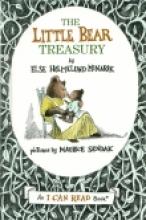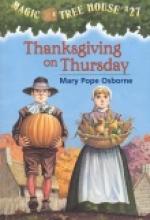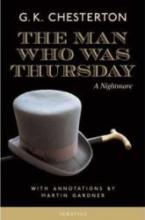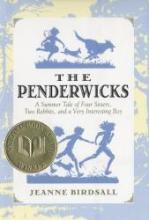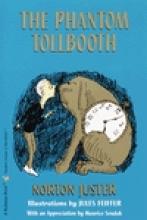Literature
The Legend of Odysseus
Number of pages:
80 pages
Copyright:
1986
Publisher:
Oxford University Press
Binding:
Softcover
Subject(s):
Setting:
Grade / Age level:
Review:
The Legend of Odysseus, by British author Peter Connolly, was first published in 1986. It tells the legend of the Trojan War and of the homecoming of Odysseus. The Legend of Odysseus is a wonderful recounting of Homer's classic tales, The Iliad and The Odyessey. The most outstanding feature is the vivid, full-color drawings in every page. This book is suitable for most children, ages 10-16. There are additonal informative pages telling about life in Ancient Greece. My only caution is that it has some questionable pictures in it. (Two of the goddesses aren't wearing any tops in three pictures.) This book is an excellent complement to any unit study on Ancient Greece.
Reviewed by:
First reviewed:
1998-99
The Lemon Sisters
Subject(s):
Resource Type:
Review:
Reviewed by:
First reviewed:
8-4-2007
The Letters of J.R.R. Tolkien
Subject(s):
Setting:
Grade / Age level:
Review:
This book is not a "must read", but it is an enlightening read (best for high school and up). I have not read any other compilation of letters like this, so even the concept was new to me. There isn't a format, a thesis or an argument to unify the book. Rather, it is the life, work and times of Tolkien which generate the letters. He writes to his wife, his children, fans of his work, his publishers and various friends. The book is a subset of his letters (edited with the help of his son Christopher). Much of what is represented is in response to questions about his works - Middle Earth, elves, hobbits etc. - and so it is much more interesting to read if one is familiar with his works. One missive in particular was written to his son about love and marriage (MOST interesting). Others relate events of his life. The letters to his publishers reveal how difficult it was for him to write.
In explaining these things, much is revealed about his understanding of the world (both philosophically and theologically). Reading the Hobbit and the Lord of the Rings, he, in one letter, describes as a "keyhole" view of his subcreation, Middle Earth. This in itself is revealing. It seems to have been very time consuming and difficult for Tolkien to produce his works. Through the letters, you begin to see that this is partly due to the fact that he was a perfectionist. He would let you see something through the keyhole (eg. a fairly brief mention of the story Luthien Tinuviel looked upon as an historical event) but wasn't really satisfied until he tackled the complete story of Luthien as well. He must have had an enormous amount of material in his study and in his head! He indicates that there are only two things in the Lord of the Rings that he does NOT know about - one being "the cats of Queen Beruthiel". ... the point being that he DOES know about the rest in great detail. He has firm ideas about the creation and descent of the elves, the work and character of the Valar/Angels, the history of the landscape, the fables associated with the morning star, Earindel. And nothing gets more attention than the languages used. He made them up for fun - it was a true love of his. He knows where they started, how they mingled with others down through Middle Earth's history, their forms, changes and pronunciations.
But I lost my thread. His philosophy and theology are very evident in his works of fiction - they make the world of Middle Earth seem real BECAUSE they are so well grounded. They blossom in these letters. He can stand back from the events and tell an inquisitor WHY something in Middle Earth happened - and that is very edifying. His perfectionism has driven him to understand our own world well enough to figure out what is really possible in Middle Earth. He makes the critical distinction between what is accidental and what is essential so that Middle Earth may diverge from our own place in space and time yet still appear REAL.
As an example, he responds to a priest who challenges Tolkien's ideas about elves - elves are undying in Middle Earth. Tolkien explains the notion that this is not an essential problem with God's creative abilities - even if it seems impossible that we would see it ourselves. You have to read his explanation - the whole point being that he DID think about it and had reasons for it even before he put it in the books.
It is gratifying, as a Catholic, to learn that Tolkien's good philosophy and theology are heartily Catholic in nature. And to learn that his greatest inspiration, comfort and love was the Eucharist!
It is interesting to read that one letter of fatherly advice to his son about love and marraige. This is one area where he makes so much sense you want to cheer. It is not mushy sentimentalism and it is not clinical psychology. It is the very human assesment of the how fallen-nature and super-nature manifest themselves in finding and keeping a spouse. And as such it is darned good advice for anyone!
You will also learn a lot about Tolkien in this book. And even though he is not perfect - there is so much to learn. There are areas in which you want to emulate him. And areas in which you may find him shy of the mark. You can do your own philosophizing about where to draw that line - and his manner and style - so humble - INVITES you to reflect like this. This book is like a life experience. His life is, after all, another life. It is good and not so good and filled with the decisions that help make us who we are.
In explaining these things, much is revealed about his understanding of the world (both philosophically and theologically). Reading the Hobbit and the Lord of the Rings, he, in one letter, describes as a "keyhole" view of his subcreation, Middle Earth. This in itself is revealing. It seems to have been very time consuming and difficult for Tolkien to produce his works. Through the letters, you begin to see that this is partly due to the fact that he was a perfectionist. He would let you see something through the keyhole (eg. a fairly brief mention of the story Luthien Tinuviel looked upon as an historical event) but wasn't really satisfied until he tackled the complete story of Luthien as well. He must have had an enormous amount of material in his study and in his head! He indicates that there are only two things in the Lord of the Rings that he does NOT know about - one being "the cats of Queen Beruthiel". ... the point being that he DOES know about the rest in great detail. He has firm ideas about the creation and descent of the elves, the work and character of the Valar/Angels, the history of the landscape, the fables associated with the morning star, Earindel. And nothing gets more attention than the languages used. He made them up for fun - it was a true love of his. He knows where they started, how they mingled with others down through Middle Earth's history, their forms, changes and pronunciations.
But I lost my thread. His philosophy and theology are very evident in his works of fiction - they make the world of Middle Earth seem real BECAUSE they are so well grounded. They blossom in these letters. He can stand back from the events and tell an inquisitor WHY something in Middle Earth happened - and that is very edifying. His perfectionism has driven him to understand our own world well enough to figure out what is really possible in Middle Earth. He makes the critical distinction between what is accidental and what is essential so that Middle Earth may diverge from our own place in space and time yet still appear REAL.
As an example, he responds to a priest who challenges Tolkien's ideas about elves - elves are undying in Middle Earth. Tolkien explains the notion that this is not an essential problem with God's creative abilities - even if it seems impossible that we would see it ourselves. You have to read his explanation - the whole point being that he DID think about it and had reasons for it even before he put it in the books.
It is gratifying, as a Catholic, to learn that Tolkien's good philosophy and theology are heartily Catholic in nature. And to learn that his greatest inspiration, comfort and love was the Eucharist!
It is interesting to read that one letter of fatherly advice to his son about love and marraige. This is one area where he makes so much sense you want to cheer. It is not mushy sentimentalism and it is not clinical psychology. It is the very human assesment of the how fallen-nature and super-nature manifest themselves in finding and keeping a spouse. And as such it is darned good advice for anyone!
You will also learn a lot about Tolkien in this book. And even though he is not perfect - there is so much to learn. There are areas in which you want to emulate him. And areas in which you may find him shy of the mark. You can do your own philosophizing about where to draw that line - and his manner and style - so humble - INVITES you to reflect like this. This book is like a life experience. His life is, after all, another life. It is good and not so good and filled with the decisions that help make us who we are.
Perspective:
Catholic
Additional notes:
also includes extensive notes and index
Reviewed by:
First reviewed:
5-8-04
The Little Bear Treasury
Subject(s):
Grade / Age level:
Resource Type:
Review:
This treasury incorporates the stories Little Bear, Little Bear's Friend and Little Bear's Visit - sweet stories from the "I Can Read" series of the 1950s and 60s. Little Bear is a walking and talking bear who makes friends with other animals and a girl named Emily. The stories involve humorous adventures and stories told by Little Bear's parents and grandparents. The stories involving Little Bear and his mother are especially sweet and portray some of the simple questions and worries of childhood. Another family favorite.
Additional notes:
Copyrights 1957/1960/1961
Reviewed by:
First reviewed:
11-15-2000
The Magic Tree House Series
Subject(s):
Grade / Age level:
Review:
In this series, 8 year old Jack and his 7 year old sister Annie travel to a different time period in each installment. The series begins with Dinosaurs Before Dark in which Jack and Annie find a tree house that has mysteriously appeared near their home in Frog Creek, Pennsylvania. In the tree are lots of books. In one particular book, Jack and Annie see scenes of various places and time periods. At the page of the dinosaurs, they say they wish they could go there. Then, presto-magic, the tree house plops down in the middle of dinosaur time. They explore the dangerous land are helped to return to the tree house by a friendly pterodactyl. The whole experience is completely mysterious to them (how did we get there, who owns the tree house), but they have one clue: a medallion with an "M" on it that they find on the grass.
In subsequent installments they find out that the tree house is owned by Morgan LeFay of King Arthur lore. She is a librarian for Camelot and travels about collecting books. Each time the children enter the tree house they take off on another adventure. Every four books in the series deals with a theme or problem that the children have to solve.
Jack and Annie are good foils for each other in the stories. Jack is cautious and reflective, always taking notes about the things he sees, or reading about them. Annie is more adventurous, jumping right into the action of the time period. For a few of the books, Mrs. Pope's husband collaborated with her to write non-fiction companions. The books are short enough to not be intimidating for new readers and interesting enough to keep them wanting to read more. My boys love them and read the new titles that come out even though they are much below their reading level now. They are intrigued by figuring out the kid-sized mysteries.
Some Christian groups have banned these books because they deal with magic. I did not find the use of magic offensive. There is no spell cast in the stories; we just hear that Merlin cast a spell. In fact, I thought it was kind of quaint and cute that Morgan LeFay is cast as a librarian.
In some of the stories, Jack and Annie have to learn about the religious or spiritual aspects of the time they have landed in. So, in Night of the Ninjas, they have to act out the Ninja way in order to make it through the forest without being caught by the bad guys (use nature, be nature, follow nature). In Buffalo Before Breakfast they have to imitate the ways of the Indian. This may cause some people some concern, but my children thought of it as merely historically interesting. The stories incorporate some vital historical information about the time period in which they travel, which Jack is always stopping to write down. This includes the religious beliefs of the people. When they travel to Pompeii to rescue a book, Jack reads from a research book about Ancient Roman times, including gladiators, the forum, public bathes, and myths of the gods and goddesses.
One thing I was concerned about was that occasionally in the stories Jack says about Annie's lack of caution, "I'm going to kill her." I was hoping my children wouldn't start saying that! And they haven't. One thing I wish they would imitate, though, is Jack taking notes or looking things up all the time.
These books are a good 2nd grade level reading bridge between just learning to read and harder books that can be tackled in 3rd grade. They are purely for pleasure reading!
In subsequent installments they find out that the tree house is owned by Morgan LeFay of King Arthur lore. She is a librarian for Camelot and travels about collecting books. Each time the children enter the tree house they take off on another adventure. Every four books in the series deals with a theme or problem that the children have to solve.
- Books 1-4: meeting Morgan and finding out what she is all about.
- Books 5-8: finding clues and artifacts that will release Morgan from a spell cast by Merlin that turned her into a mouse.
- Books 9-12: solving riddles to pass the test to become Master Librarians.
- Books 13-16: saving books from four ancient time periods that would otherwise be lost forever.
- Books 17-20: rescuing a mysterious dog that is under a magic spell.
- Books 21-24: finding 4 special kinds of writing for Morgan's library in order to save Camelot (something to follow, something to send, something to learn, something to lend).
Jack and Annie are good foils for each other in the stories. Jack is cautious and reflective, always taking notes about the things he sees, or reading about them. Annie is more adventurous, jumping right into the action of the time period. For a few of the books, Mrs. Pope's husband collaborated with her to write non-fiction companions. The books are short enough to not be intimidating for new readers and interesting enough to keep them wanting to read more. My boys love them and read the new titles that come out even though they are much below their reading level now. They are intrigued by figuring out the kid-sized mysteries.
Some Christian groups have banned these books because they deal with magic. I did not find the use of magic offensive. There is no spell cast in the stories; we just hear that Merlin cast a spell. In fact, I thought it was kind of quaint and cute that Morgan LeFay is cast as a librarian.
In some of the stories, Jack and Annie have to learn about the religious or spiritual aspects of the time they have landed in. So, in Night of the Ninjas, they have to act out the Ninja way in order to make it through the forest without being caught by the bad guys (use nature, be nature, follow nature). In Buffalo Before Breakfast they have to imitate the ways of the Indian. This may cause some people some concern, but my children thought of it as merely historically interesting. The stories incorporate some vital historical information about the time period in which they travel, which Jack is always stopping to write down. This includes the religious beliefs of the people. When they travel to Pompeii to rescue a book, Jack reads from a research book about Ancient Roman times, including gladiators, the forum, public bathes, and myths of the gods and goddesses.
One thing I was concerned about was that occasionally in the stories Jack says about Annie's lack of caution, "I'm going to kill her." I was hoping my children wouldn't start saying that! And they haven't. One thing I wish they would imitate, though, is Jack taking notes or looking things up all the time.
These books are a good 2nd grade level reading bridge between just learning to read and harder books that can be tackled in 3rd grade. They are purely for pleasure reading!
Additional notes:
approximately 70-80 pages each
Reviewed by:
First reviewed:
2-18-04
The Man Who Was Thursday
A Nightmare
Subject(s):
Grade / Age level:
Review:
Perspective:
Catholic
Reviewed by:
First reviewed:
1-21-2008
The Penderwicks
A Summer Tale of Four Sisters, Two Rabbits, and a Very Interesting Boy
Subject(s):
Grade / Age level:
Review:
It may have been the old fashioned cover with all those happy children, or the subtitle, but the fact is, I grabbed a copy of the Penderwicks from the library even though it’s a 2005 copyright: our read-aloud selections are almost never beyond 1950! It took me a while, however, and some research online, before I inserted the CD into the van’s stereo, and not without some trepidation. Needless to say my personal experience with contemporary children’s materials has been… bumpy at best. But this one promised to be different.
By the second chapter, we were hooked. Four sisters and a dog? My girls loved that. A professor dad? With lots of Latin phrases? I loved that. I found pro life themes all over, in references to their loving, deceased mother and other positive references to large families. The story revolves around the family's summer spell in a rented cottage located in a wealthy estate with breathtaking, manicured gardens. The sisters' personalities emerge real and believable: in our conversations about the book we discussed things such as Skye's decision to learn Algebra over the summer, or our desire to read Jane's Sabrina Star stories.
I am delighted to recommend The Penderwicks for family reading. Jane Birdsall’s writing will undoubtedly improve your young readers’, or listeners’ as in our case, writing. It’s like if someone, while captivating them with a simple yet profound story of family and friendship, is able to exemplify to them all of the good writing skills we’ve been trying to instill in them for years!
We can't wait for the sequel, coming out next month. And I just love the fact that the author, 42, had never written anything until this. Her writing, to us, had a crystalline quality. And a National Book Award to boot! The CD audio version was read carefully and with very well-done character voices.
Reviewed by:
First reviewed:
2-25-2008
The Phantom Tollbooth
Subject(s):
Grade / Age level:
Review:
This rather ordinary-looking book is a genuine treasure! It is the story of a bored little boy who has a mysterious tollbooth suddenly appear in his bedroom one day. He goes through the tollbooth, mostly because there is nothing better to do at that present moment. Well, a thoroughly entertaining adventure awaits our young friend, Milo. The novel is a romp through the lands of numbers and letters, the former ruled by the Mathemagician, of course! The plot is Milo's quest to rescue the princesses of Rhyme and Reason, but the fun and enjoyment is in reading about Milo's adventures along the way. This book is sure to captivate readers of all ages, from five years old to adult. It is a wonderful family read-aloud. Highly recommended. Look for it at your local library, or consider purchasing a copy of The Phantom Tollbooth. It's a classic that is sure to be re-read.
Reviewed by:
First reviewed:
1998-99
The Princess and Curdie
Grade / Age level:
Review:
The Princess and Curdie continues the fantasy saga begun in MacDonald's The Princess and the Goblin. This novel gets off to a slower start than the first one in the series, but it is just as attention-holding. Curdie, the young hero, is put to the test in this story, and must prove himself both brave and loyal, whilst remaining trustworthy and honest. In this story, Curdie is given the gifts of a magic of his own that can only be used for others and a faithful but unusual traveling companion. His quest takes him to the home of the Princess and provides a grand adventure, with the final suspenseful battle calling him to give his best.
This novel takes place just a short time after the events in the previous book and is best enjoyed by reading the first tale first. This classic work is also written on many different levels, and numerous allegorical references to Christianity are present. The ending is expected yet surprising and leaves the reader wanting more. We read this book in an inexpensive paperback edition, and we found the "word pictures" wonderful for stirring the imagination. I have been on the lookout for an illustrated edition to compare the artist's ideas with my own. The children also adored this story, although my 9 and 12-year-olds liked it best.
This novel takes place just a short time after the events in the previous book and is best enjoyed by reading the first tale first. This classic work is also written on many different levels, and numerous allegorical references to Christianity are present. The ending is expected yet surprising and leaves the reader wanting more. We read this book in an inexpensive paperback edition, and we found the "word pictures" wonderful for stirring the imagination. I have been on the lookout for an illustrated edition to compare the artist's ideas with my own. The children also adored this story, although my 9 and 12-year-olds liked it best.
Reviewed by:
First reviewed:
4/19/01

